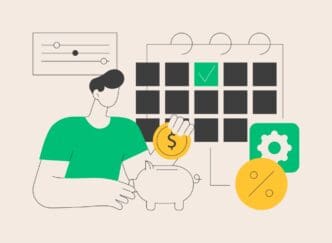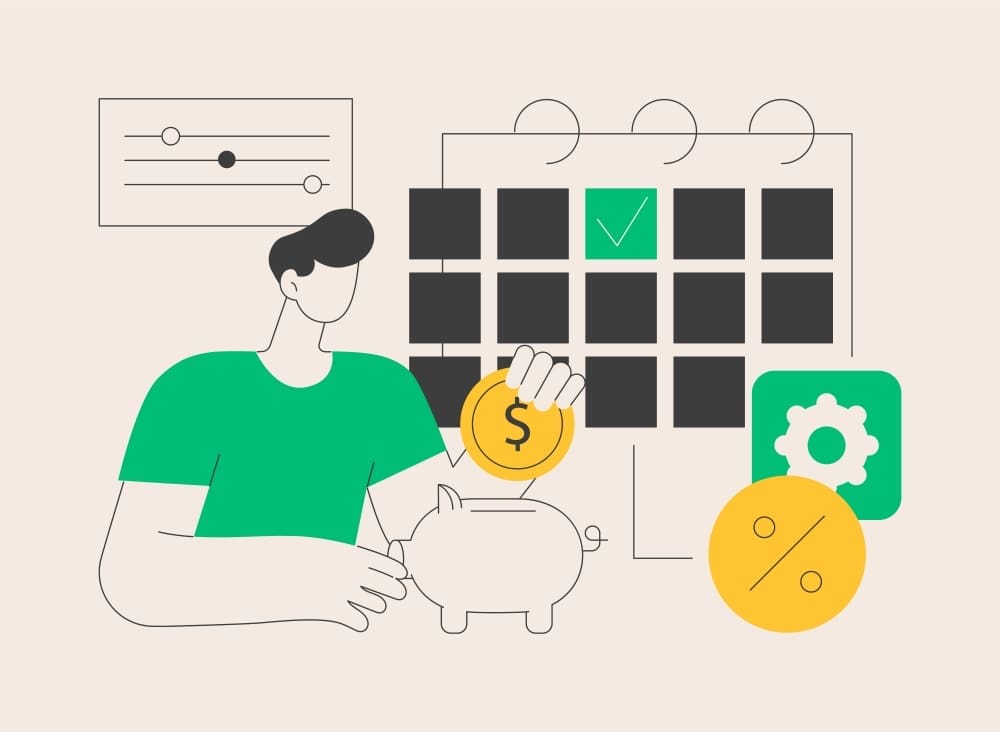As households across the country grapple with persistent inflation and rising living costs, a systematic review of monthly expenses can unlock hundreds, if not thousands, of dollars in annual savings. For anyone seeking to bolster their financial security, the most effective strategy involves a targeted approach to cutting recurring bills—from negotiating with service providers and refinancing debt to optimizing utility usage and curbing subscription bloat. By implementing a series of deliberate, actionable changes, individuals and families can immediately redirect funds from necessary expenditures toward critical goals like building an emergency fund, paying down debt, or investing for the future.
1. Conduct a Thorough Budget Audit
Before you can effectively cut costs, you must know exactly where your money is going. A budget audit is the foundational first step, providing a clear snapshot of your financial landscape. This isn’t about judgment; it’s about gathering data to make informed decisions.
Start by tracking every single dollar of income and expenditure for at least one full month. Use a spreadsheet, a dedicated budgeting app like Mint or YNAB (You Need A Budget), or even a simple notebook. The key is to be meticulous and honest with yourself.
Once you have a month’s worth of data, categorize your spending into fixed costs (rent/mortgage, car payment), variable costs (groceries, utilities), and discretionary spending (dining out, entertainment). This categorization will immediately highlight areas where you have the most control and potential for savings.
2. Aggressively Cull Your Subscriptions
In the modern digital economy, small, recurring subscription fees are a primary culprit of “budget bloat.” A single $15 monthly charge may seem insignificant, but a dozen of them can easily add up to over $2,000 a year. These often fly under the radar, creating a constant drain on your resources.
Comb through your bank and credit card statements to identify every recurring charge. This includes streaming services (Netflix, Hulu, Max), music platforms (Spotify, Apple Music), software, news publications, gym memberships, and subscription boxes. Lay them all out in a list.
For each subscription, ask yourself a simple question: “Have I used this in the last 30 days?” If the answer is no, or if you can access a similar service for free (like through your local library), cancel it immediately. Be ruthless. You can always re-subscribe later if you genuinely miss the service.
3. Negotiate Your Recurring Bills
Many consumers mistakenly believe that the prices for services like cable, internet, and cell phone plans are non-negotiable. In reality, these companies often have significant leeway to offer discounts and better rates, especially to retain existing customers. A simple phone call can lead to substantial monthly savings.
How to Approach the Negotiation
First, do your homework. Research what competitors are offering new customers for similar services. This information is your primary leverage. When you call your provider, politely state that your bill has become too high and that you are considering switching to a competitor who offers a better rate.
Ask to speak with the customer retention or loyalty department, as these agents typically have the most authority to offer discounts. Clearly state the competitor’s price you found and ask if they can match or beat it. Remain calm, polite, and persistent. If the first agent can’t help, don’t be afraid to thank them and call back to speak with someone else.
4. Optimize Your Grocery Spending
Food is one of the largest variable expenses for most households, making it a prime area for savings. By shifting from reactive shopping to proactive planning, you can dramatically reduce your grocery bill without sacrificing nutrition or quality.
The most effective strategy is meal planning. Each week, plan your meals and snacks, and build your grocery list based on that plan. This simple habit prevents impulse buys and ensures every item you purchase has a purpose, reducing food waste.
Other powerful tactics include shopping with a list and sticking to it, opting for store-brand (generic) products over name brands, which are often identical in quality, and using digital coupon apps from your local grocery stores. Furthermore, consider buying non-perishable items in bulk when they are on sale and cooking larger batches of meals to freeze for later.
5. Refinance High-Interest Debt
High-interest debt, particularly from credit cards, personal loans, or older mortgages, can act as a financial anchor, siphoning away hundreds of dollars each month in interest payments alone. Refinancing this debt to a lower interest rate can be one of the most impactful financial moves you make.
Mortgage and Auto Loan Refinancing
If current interest rates are lower than the rate on your existing mortgage or car loan, refinancing could lower your monthly payment and save you thousands over the life of the loan. This is especially true for homeowners who have built up significant equity or whose credit scores have improved since their initial purchase.
Credit Card Debt Consolidation
For high-interest credit card debt, consider a balance transfer to a new card offering a 0% introductory APR. This allows you to pay down the principal balance without accruing interest for a set period, typically 12 to 21 months. Alternatively, a low-interest personal loan can be used to consolidate multiple credit card balances into a single, more manageable monthly payment.
6. Lower Your Home Utility Costs
Utility bills for electricity, gas, and water are a constant presence in any budget, but their costs are not entirely fixed. Small behavioral and technological changes can lead to significant savings over time.
Start with your thermostat. Installing a programmable or smart thermostat allows you to automatically adjust the temperature when you’re away from home or asleep, saving significant energy. The Department of Energy estimates you can save as much as 10% a year on heating and cooling by simply turning your thermostat back 7°-10°F for 8 hours a day.
Also, conduct a simple energy audit of your home. Check for drafts around windows and doors and seal them with weatherstripping or caulk. Unplug electronics when not in use to combat “phantom load,” the energy they draw even when turned off. Finally, switch to LED light bulbs, which use at least 75% less energy and last 25 times longer than incandescent lighting.
7. Re-evaluate Your Insurance Policies
Insurance is a critical safety net, but that doesn’t mean you should overpay for it. Premiums for auto, home, and renter’s insurance can vary widely between providers for the exact same coverage. It’s essential to shop around at least once a year.
Gather your current policy documents and get quotes from at least three to five different insurance companies. You can do this online through quote comparison sites or by contacting agents directly. Don’t just look at the price; ensure the coverage levels are comparable.
Also, ask about available discounts. Many insurers offer significant savings for bundling auto and home policies, having a good driving record, installing security systems, or being a member of certain professional organizations. Raising your deductible—the amount you pay out-of-pocket before coverage kicks in—can also lower your premium, but be sure you have enough in savings to cover the higher amount if you need to make a claim.
8. Cut Down on Transportation Costs
For many, transportation is the second-largest expense after housing. While selling a car may not be practical for everyone, there are numerous ways to reduce the cost of getting around.
If you live in an area with viable public transit, consider using it for your daily commute, even just a few days a week. The cost of a monthly pass is often far less than the combined cost of gas, parking, and vehicle wear-and-tear. Carpooling with coworkers or neighbors is another excellent way to share the financial burden.
Proper vehicle maintenance is also key. Keeping your tires properly inflated, getting regular oil changes, and removing unnecessary weight from your car can improve your fuel efficiency by several percentage points, saving you money at the pump with every fill-up.
9. Embrace “No-Spend” Challenges
Sometimes the best way to reset your spending habits is to stop spending altogether, at least on non-essentials. A “no-spend challenge”—whether for a weekend, a week, or even a month—forces you to become more resourceful and mindful of your consumption.
During a no-spend period, you commit to only paying for true necessities like your mortgage/rent, utilities, and basic groceries. All discretionary spending is off-limits. This means no dining out, no coffee shop runs, no online shopping, and no paid entertainment.
This exercise reveals how much of your spending is driven by habit or impulse rather than genuine need. It also encourages you to find free alternatives for entertainment, such as visiting a park, borrowing movies from the library, or hosting a potluck with friends instead of going to a restaurant.
10. Automate Your Savings to Lock in Gains
Cutting your bills is only half the battle. The final, crucial step is to ensure the money you save doesn’t just get absorbed back into your spending. The most effective way to do this is to “pay yourself first” by automating your savings.
Once you’ve calculated how much you’re saving each month from your cost-cutting efforts, set up an automatic transfer from your checking account to a high-yield savings account for that amount. Schedule the transfer to occur the day after you get paid.
By treating your savings as the first and most important “bill” you pay, you remove the temptation to spend it. This disciplined approach ensures that your hard work in reducing expenses translates directly into tangible progress toward your financial goals, building a more secure and prosperous future.
Conclusion
Regaining control over your monthly finances is an empowering process that is accessible to everyone. By systematically auditing your budget, challenging every expense, and making intentional choices about where your money goes, you can free up significant cash flow. These ten strategies, ranging from simple negotiations to strategic refinancing, provide a comprehensive roadmap to not only weather economic uncertainty but to actively build wealth and achieve long-term financial well-being.








